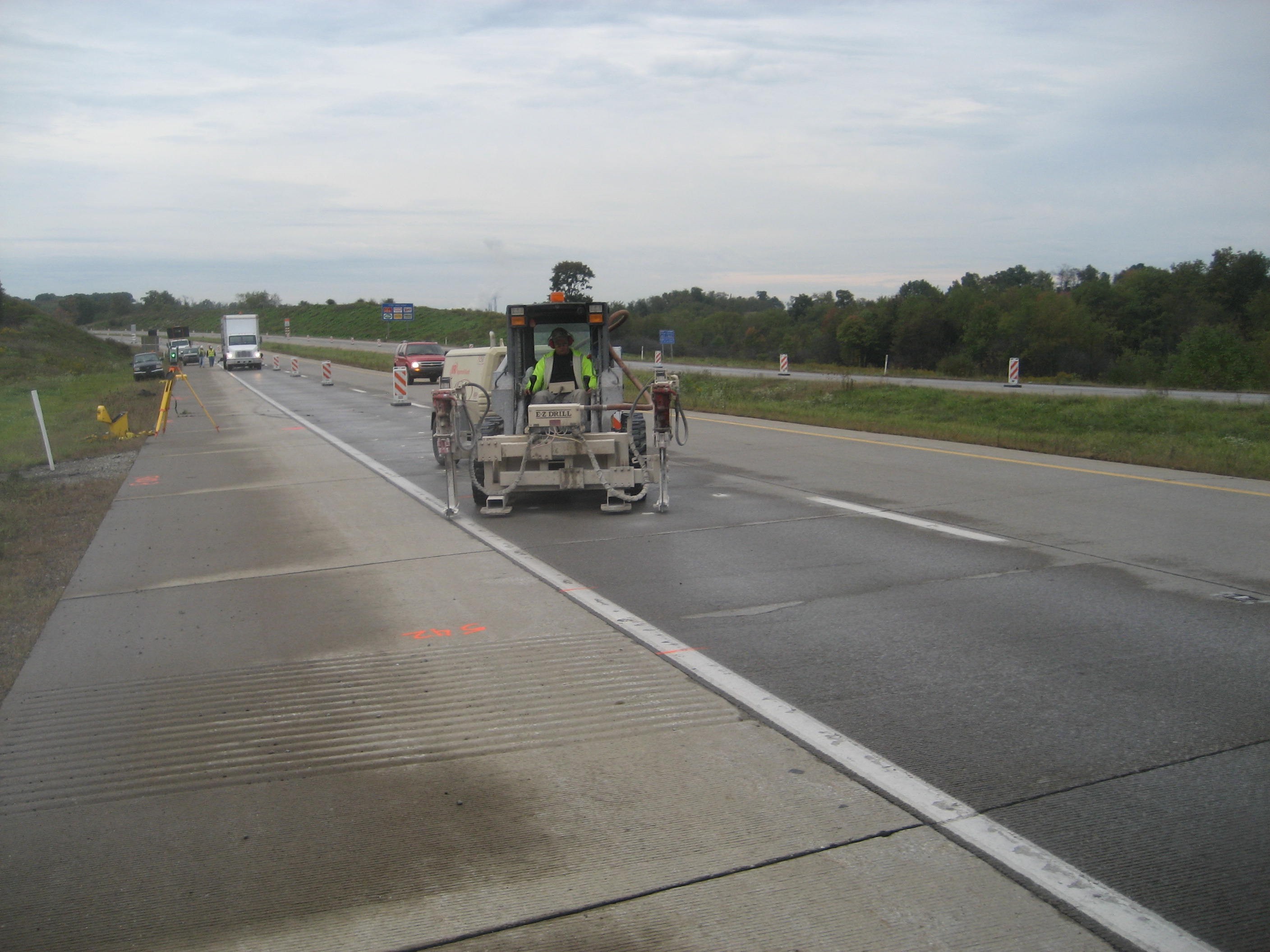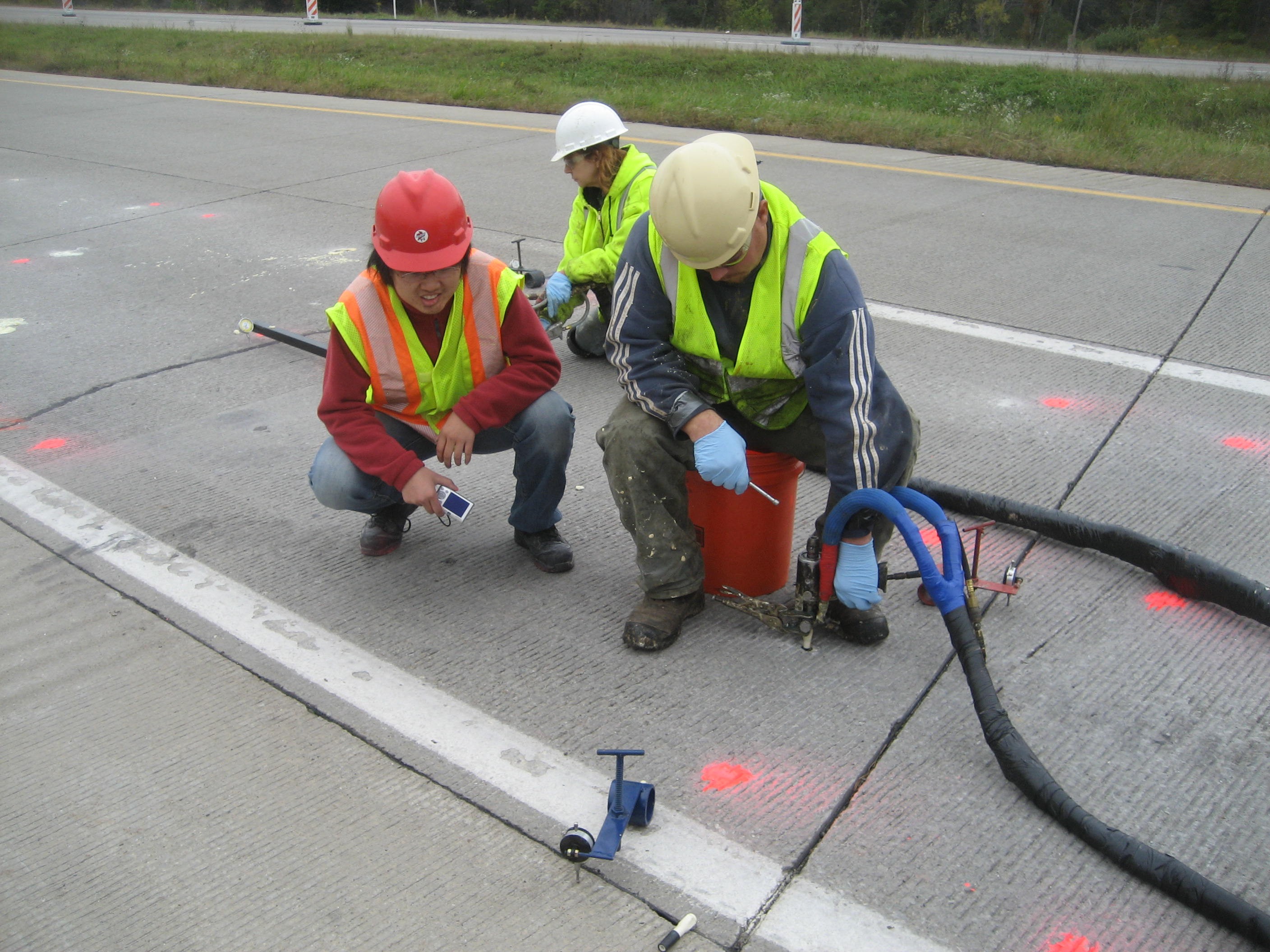

<p><p><figure id='attachment_1486' style='max-width:1024px' class='caption alignnone'><img class="wp-image-1486 size-large" src="https://www.geoinstitute.org/sites/default/files/geotech-tools-uploads/…; alt="Photograph of equipment used to drill holes in concrete pavement to allow injection of polyurethane under the pavement." width="1024" height="768" /><figcaption class='caption-text'> Drilling holes on PCC pavement. From White et al. (2010).</figcaption></figure></p><p><figure id='attachment_1487' style='max-width:1024px' class='caption alignnone'><img class="wp-image-1487 size-large" src="https://www.geoinstitute.org/sites/default/files/geotech-tools-uploads/…; alt="Photograph of injecting polyurethane under a PCC pavement." width="1024" height="768" /><figcaption class='caption-text'> Injection of polyurethane into PCC pavement. From White et al. (2010).</figcaption></figure></p><p>Injecting light weight foam into subgrade or foundation soil compacts and/or consolidates soft soil under foundations of construction projects. Advantages of this technique include cost efficiency, minimize disturbance to surroundings and environmental friendly. This technique is applicable new embankments and embankment widening on soft soils and to stabilization of the working platform.</p><p>
